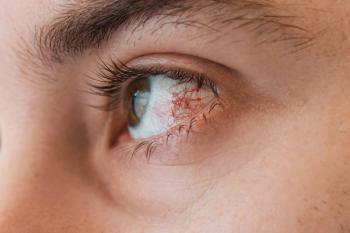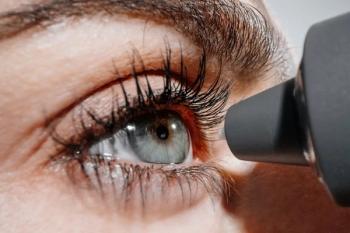
In Memoriam: Dry-eye researcher dies
Jeffrey P. Gilbard, MD, founder, chief executive officer, and chief scientific officer of Advanced Vision Research, died Aug. 12, following complications from a bicycling accident.
That drive to help people and solve a problem few were willing or able to tackle motivated Dr. Gilbard to develop a line of products that helped relieve their suffering and treat dry eye disease.
Dr. Gilbard, the founder, chief executive officer, and chief scientific officer of Advanced Vision Research, died Aug. 12 following complications from a bicycling accident.
While riding his bicycle with his wife on July 19, Dr. Gilbard struck an object in the road and fell. He died 3 weeks later at Massachusetts General Hospital in Boston. In addition to his wife, he is survived by two sons and a daughter.
Dr. Gilbard was a frequent visitor to optometry meetings, where he was eager to share his knowledge of dry eye. His company also became the first corporate sponsor of the Ocular Surface Society of Optometry (OSSO).
"What was critical was his identification that tear film osmolarity was an important indicator of an inadequate or unhealthy tear film," said Katherine Mastrota, OD, an optometrist in private practice in New York, NY, and OSSO secretary. "Then he was able to modify [the tear film] by adding micronutrients and bicarbonate and potassium rather than having a solution that was just electrolytes, polymer to increase viscosity and a preservative. He was able to make something that more effectively mirrored a natural tear."
In 1976, as a young medical student, Dr. Gilbard was astounded by how little was available to help patients with dry eye disease. In 1978, he received funding from the National Eye Institute to research the causes and treatment of dry eye, and his lifetime of work spawned a greater understanding of ocular surface disease, Dr. Mastrota said.
Dr. Gilbard's pioneering work led to a better understanding of tear film osmolarity and a realization that a loss of water in the tears makes them hyper-osmotic. His hypo-osmotic TheraTears Lubricant Eye Drops, launched in 1995, were developed to lower the high-salt concentration, balance the electrolytes in the eye, and offer a lubricant to relieve irritation.
He developed related products, including a vitamin supplement with Omega-3 oils to support healthy tear production, and an eyelid cleanser to remove bacteria that can lead to blepharitis and exacerbate dry eye.
"As people get older, they get dry eyes or they have meibomian gland dysfunction, and they become contact lens-intolerant," said Larry Bickford, OD, in private practice in Santa Barbara, CA, and a longtime friend of Dr. Gilbard. "Instead of throwing drops at them, we now know what we can do to remediate their problem. It's pretty awesome to consider that, thanks to him, we have a pretty good handle on what makes people have this problem."
Newsletter
Want more insights like this? Subscribe to Optometry Times and get clinical pearls and practice tips delivered straight to your inbox.



















































.png)


